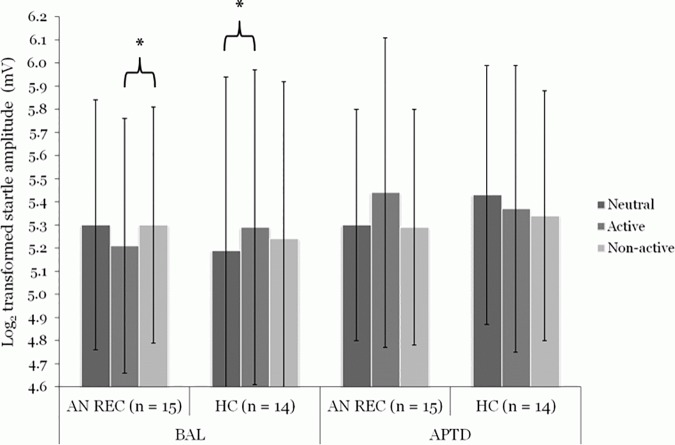Fig 2. Effect of acute phenylalanine and tyrosine depletion (APTD) on startle eye-blink amplitudes to physically active and non-active body stimuli (relative to neutral cues) in individuals recovered from anorexia nervosa (AN REC, n = 15) and healthy controls (HC, n = 14).
In the balanced condition (BAL), AN REC tended towards decreased startle potentiation (an appetitive response) to active (5.21 ± 0.55) relative to non-active cues (5.30 ± 0.51), while HC displayed increased startle potentiation (an aversive response) to active (5.29 ± 0.68) relative to neutral (5.19 ± 0.75) cues. In the low DA condition (APTD), AN REC perceived active stimuli (5.44 ± 0.67) as more aversive than neutral cues (5.30 ± 0.50), while HC perceived neutral stimuli (5.43 ± 0.56) as more aversive than non-active cues (5.34 ± 0.54); however, differences did not reach significance during APTD. The repeated measures ANOVA was based on the log transformed startle eye-blink potentiations (in millivolts) for AN REC in the BAL (Neutral: 227.43 ± 124.19; Active: 207.19 ± 99.74; Non-active: 222.70 ± 101.74) and APTD conditions (Neutral: 224.77 ± 113.62; Active: 292.60 ± 263.04; Non-active: 221.80 ± 113.70) and for HC in the BAL (Neutral: 229.66 ± 165.67; Active: 243.64 ± 162.38; Non-active: 231.55 ± 160.60) and APTD conditions (Neutral: 259.87 ± 131.95; Active: 246.08 ± 113.52; Non-active: 235.52 ± 122.55). Data are expressed as Means ± SD. *P ≤ 0.10. ANOVA: analysis of variance. SD: standard deviation.

